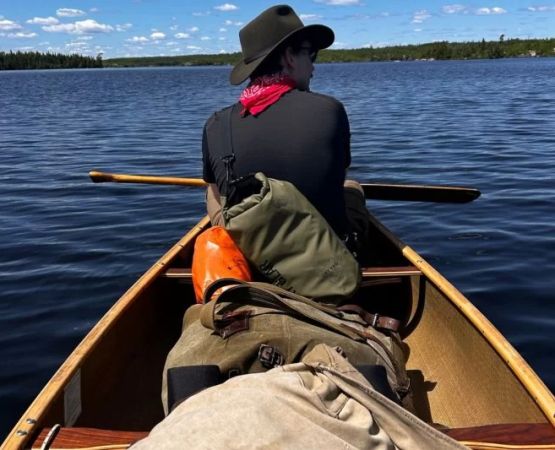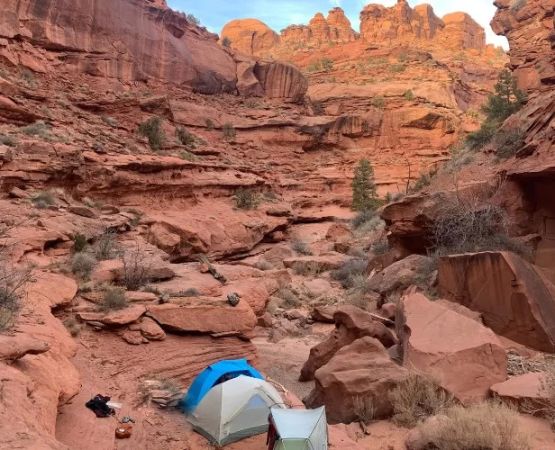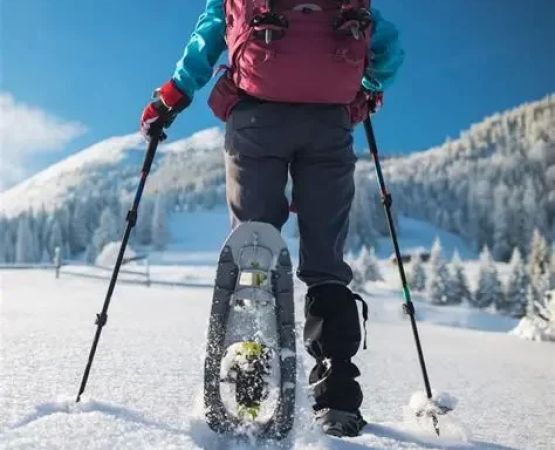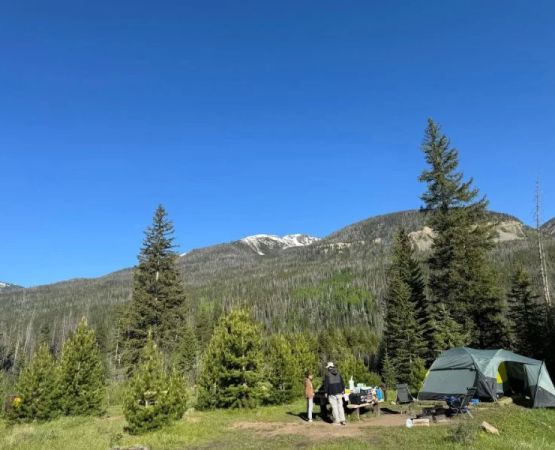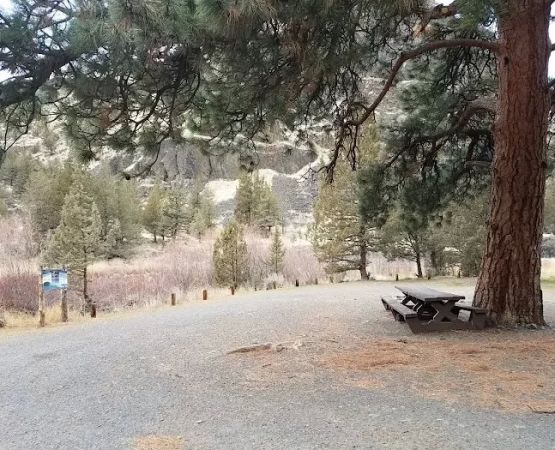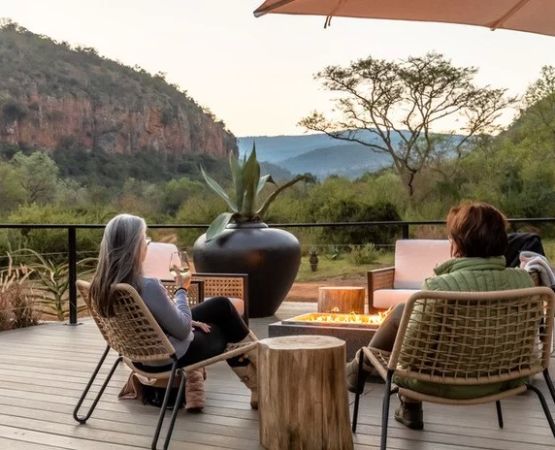- 1 - Understanding Folded Ridge Terrain
- 2 - Choosing Safe Camping Spots Near Ridge Edges
- 3 - Preparing for Weather and Wind Conditions
- 4 - Essential Gear for Camping Near Ridge Edges
- 5 - Campfire Safety and Environmental Awareness
- 6 - A Real-Life Ridge Camping Experience
- 7 - Expert Recommendations from Pine Cliff Resort
1 - Understanding Folded Ridge Terrain
Camping near folded ridge edges offers one of the most breathtaking outdoor experiences you can find. These formations, created by millions of years of tectonic pressure, produce sweeping views, dramatic cliffs, and unique ecosystems. However, the same rugged beauty that draws campers also comes with challenges. Uneven terrain, unpredictable winds, and limited flat surfaces can turn a scenic campsite into a dangerous one if you’re not prepared.
1.1 - What Makes Folded Ridges Unique
Folded ridges are formed when layers of rock bend instead of breaking under geological pressure. The result is a landscape of rippling hills and sharp cliffs—often with steep drop-offs on one side and rolling slopes on the other. These areas are common in mountain ranges like the Appalachians and the Rockies, where geology and weather combine to create some of the most stunning campgrounds in the U.S.
1.2 - The Appeal of Ridge Camping
There’s something magical about waking up above the clouds, with valleys spread beneath you. Many campers seek folded ridge edges for the sunrise views, isolation, and sense of adventure they provide. But while the view may be worth the climb, preparation and respect for the landscape are key to staying safe.
2 - Choosing Safe Camping Spots Near Ridge Edges
Safety should always be the top priority when camping near ridge edges. Even experienced campers can underestimate the risks of wind exposure and unstable ground. Here’s how to find the perfect balance between a scenic and secure location.
2.1 - Keep a Safe Distance from the Edge
As tempting as it may be to pitch your tent right on the edge for a stunning view, this can be dangerous. Ground near the edge may be eroded or unstable. Always set up camp at least 15 to 20 feet away from drop-offs to reduce the risk of collapse or wind-related accidents.
2.2 - Assess the Ground Stability
Before setting up your tent, check the soil. Avoid areas with loose rocks, gravel, or signs of recent erosion. Press your foot into the ground—if it gives easily or shifts, move your campsite farther back. Solid, compacted ground offers better security for your tent stakes and reduces slipping hazards during rain.
2.3 - Look for Natural Wind Barriers
Ridge edges are notoriously windy. Setting up behind natural barriers like boulders, dense bushes, or tree clusters can make your campsite significantly safer and more comfortable. Avoid tall, isolated trees, as they are more likely to attract lightning during storms.
3 - Preparing for Weather and Wind Conditions
Weather changes rapidly at higher elevations, especially near exposed ridges. Wind speeds can shift dramatically between day and night, and sudden storms are common. Proper preparation is crucial for both safety and comfort.
3.1 - Check Forecasts Before Your Trip
Always monitor local weather conditions before heading out. Folded ridge regions can experience microclimates that differ from nearby valleys. Even if the forecast looks mild, bring gear suited for sudden temperature drops and rain.
3.2 - Anchor Your Tent Securely
Wind gusts on ridge tops can reach 40 mph or more. Use heavy-duty tent stakes, guy lines, and additional anchors to secure your shelter. Some campers even use weighted rocks to reinforce corners. A low-profile tent design can also minimize wind resistance.
3.3 - Be Prepared for Cold Nights
Even during summer, ridge camping can get surprisingly cold after sunset. Bring an insulated sleeping pad and rated sleeping bag. Consider layering clothing instead of relying on one heavy jacket—this helps regulate body temperature as conditions change.
4 - Essential Gear for Camping Near Ridge Edges
The right gear can make the difference between a challenging and rewarding ridge camping experience. Here are some essentials every camper should bring:
4.1 - Lightweight but Sturdy Tent
Choose a tent designed for high-wind conditions. Dome-style tents tend to perform better than tall cabin tents. Look for reinforced poles and double-stitched seams to withstand harsh weather.
4.2 - Compact Cooking Equipment
Since open fires can be risky near cliffs, opt for portable camping stoves. They’re safer and more efficient, especially in windy environments. Always cook a few feet away from your tent to avoid accidents.
4.3 - Navigation and Communication Tools
Folded ridges can make navigation tricky. Bring a GPS device or a topographic map to track your route. Mobile signals can be weak, so consider a satellite communicator for emergencies.
5 - Campfire Safety and Environmental Awareness
Respect for nature is an essential part of ridge camping. Because these ecosystems are often fragile, responsible camping helps preserve their beauty for others to enjoy.
5.1 - Use Designated Fire Rings
If fires are allowed, only use established fire rings and keep them small. Always check for fire restrictions before your trip, as high winds and dry brush can quickly turn a campfire into a wildfire hazard.
5.2 - Practice Leave No Trace Principles
Pack out all waste and minimize your impact. Avoid disturbing rocks or plants along the ridge—these areas often host rare flora that thrives only in the thin mountain soil.
5.3 - Avoid Nighttime Exploration Near Edges
Even experienced hikers can misjudge distances in low light. Avoid walking near ridge edges after sunset to prevent falls or injuries. Always keep a reliable headlamp and spare batteries handy.
6 - A Real-Life Ridge Camping Experience
Last summer, a group of campers from Colorado shared their story about setting up near a folded ridge in the Sangre de Cristo Mountains. What began as a peaceful evening with panoramic views turned into a battle against unexpected high winds. Their tents held firm thanks to proper anchoring, and they learned firsthand the value of preparation. The next morning, they were rewarded with one of the most stunning sunrises they had ever witnessed—a golden glow spilling across the peaks like fire on stone.
6.1 - Lessons Learned from the Adventure
The group emphasized three key takeaways: never underestimate mountain weather, always secure your gear, and stay at a safe distance from edges. Their experience reinforces the importance of safety measures when camping in elevated, exposed areas.
7 - Expert Recommendations from Pine Cliff Resort
At Pine Cliff Resort, outdoor experts and seasoned campers share one common message: ridge camping is about balance—between thrill and caution, beauty and responsibility. Whether you’re planning a solo trip or a family adventure, preparation and respect for the terrain will ensure a memorable experience. Explore Pine Cliff Resort’s collection of camping guides, gear reviews, and nature insights to make your next ridge adventure safer and more enjoyable.


